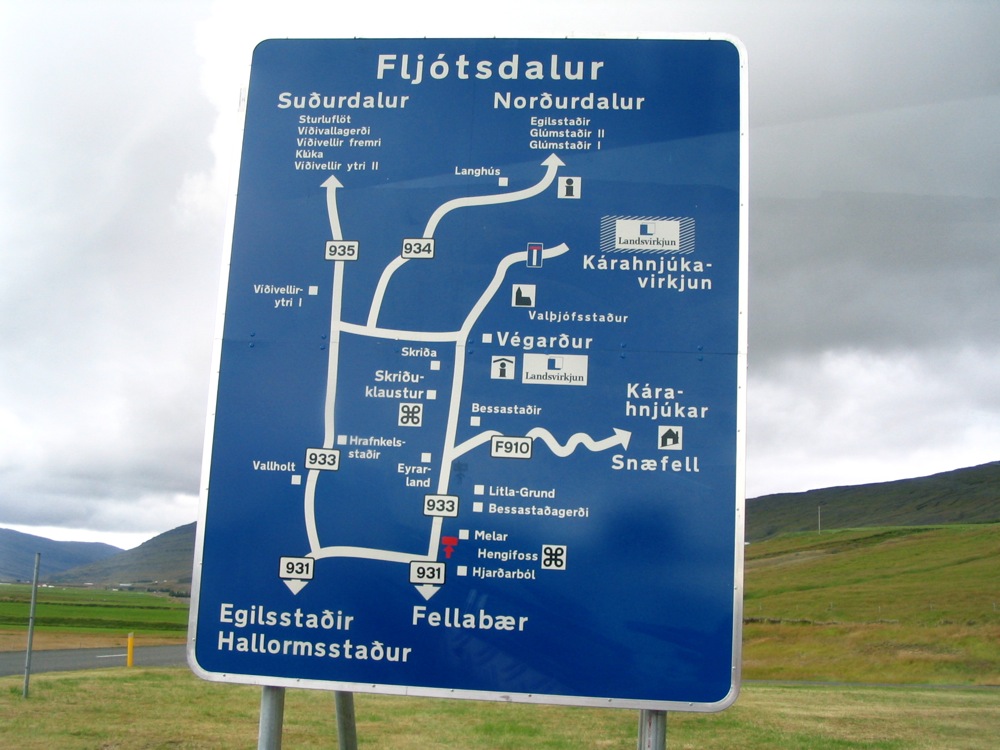When Icelanders fail Icelandic. Posted by hulda on Jul 2, 2015 in Icelandic grammar
I’ve often addressed the various problems a language learner might come across when learning the language, but sometimes it seems that Icelandic is not easy for the natives either. Despite all the efforts at preserving the language it just tries to change itself anyway, resulting in f.ex. þágufallssýki – the dative illness – where people will attempt to use a dative form instead of accusative. For once people who are studying the language have a slight upper hand, because while you’re learning you can keep the Icelander-typical mistakes in mind and learn to not make them in the first place. Let’s have a look at the things Icelanders may struggle with.
Þágufallssýki
An often used example of this is the verb að langa (= to want) because it demands the subjective in þolfall (= accusative). However, today a large amount of Icelanders think þágufall would sound better and try to shove it in instead:
Mér langar í ís.
Mig langar í ís. (= I want ice cream.)
Sigurði langar í ís.
Sigurð langar í ís. (= Sigurður wants ice cream.)
This is not limited to this particular verb either; similar verbs are f.ex. að vanta (= to lack something) and að hlakka til (= to look forward to something). Of these the first one takes only þolfall, the latter a nefnifall (= nominative):
Mér vantar mat.
Mig vantar mat. (= I’m lacking food/I don’t have food.)
Mér hlakkar til að sjá þig.
Ég hlakka til að sjá þig. (= I’m looking forward to seeing you.)
Þágufall cannot substitute neither nefnifall nor þolfall here, not for any reason, so if you hear a local use it instead don’t “correct” your own language use accordingly – it’s a mistake.
Using ef instead of hvort
This mistake may have roots in English, the language that nowadays has the largest influence on Icelandic. Let’s look at the example “I don’t know if Hulda is home.”
Ég veit ekki ef Hulda sé heima.
Ég veit ekki hvort Hulda sé heima.
Though the words “if” and “ef” technically speaking mean the same, in this context they’re false friends. Interestingly this false friend is actually affecting people’s mother tongue instead of the language they’re learning, but as long as you keep in mind that you cannot just translate every “if” as “ef” you’re safe.
I or y?
Since certain vowels in Icelandic are pronounced very much the same they sometimes confuse people in written forms.
afneytun – afneitun, aldrey – aldrei, dreyfa – dreifa, fleyra – fleira… the list goes on, but you can look at some of the most typical mistakes here.
Hin nýja þolmynd
The new passive voice, nýja þolmynd, refers to a faulty way of creating passive voice. This one’s a little harder to explain but Icelandic has its own way of creating þolmynd – let’s look at some examples:
Það var sagt mér…
Mér var sagt… (= I was told…)
Það var bannað mér.
Mér var bannað. (= I was forbidden.)
Avoid starting your sentences with “það” when using passive voice and you’re just fine. 🙂
Don’t worry though, I’m not trying to say that Icelandic is so horribly difficult that even Icelanders couldn’t learn it properly. If anything every language has its tricky parts – no doubt each one of you readers could easily name examples from your own mother tongues where the native language users make mistakes – and Icelandic is no exception. However, learning what the locals get wrong is like seeing a ditch and therefore not falling in it, language-wise!
More about the most typical mistakes Icelanders make:
Sex algengar málvillur sem gera mann gráhærðan (= Six common language mistakes that make your hair turn gray) here.
Hverjar eru algengustu villurnar í talaðri íslensku? (= What are the most common mistakes in spoken Icelandic?) here.
Listi yfir íslenskar stafsetningar- og málfræðivillur (= A list of Icelandic typos and grammatical mistakes) here.

Build vocabulary, practice pronunciation, and more with Transparent Language Online. Available anytime, anywhere, on any device.
About the Author: hulda
Hi, I'm Hulda, originally Finnish but now living in the suburbs of Reykjavík. I'm here to help you in any way I can if you're considering learning Icelandic. Nice to meet you!







Comments:
Helen:
Thank you Hulda, this is very useful. Although I haven’t yet reached a high enough level in Icelandic to pretend to even see a mistake, I know many students will appreciate. I would sometimes do this myself when teaching, but with care to warn against actually retaining the mistakes more than the correct forms, crossing out the wrong form in red or quickly erasing it from the board!:)
Helen:
Re: “Ég hlakkar til að sjá þig. “… I thought it was ég hlakka????
Takk fyrir svar.
hulda:
@Helen Oooops excellent catch, I’ve corrected the typo. Thank you for pointing it out! 🙂
I agree, it’s best to make it very clear that the mistake versions aren’t to be remembered, or at least put a good stress on the correct versions.
Mary Ellen:
Hi! I stumbled into your site while looking for into on the Aesir gods (don’t know how that happened), but I stayed and browsed because I’m interested in Iceland.
Do you mind if I add a little note about a mistake many English-speakers make in their English? Because I see an example above, where it should “number of Icelanders” and not “amount of Icelanders”. ‘Amount’ is for things that can’t be counted: the amount of water that goes over the falls every minute, the amount of lava that is boiling under Iceland right now . ‘Number’ is for things that can be counted: the number of gallons of water that goes over the falls (because you can count gallons–in theory!–even though you can’t count water), the number of times an Icelandic volcano has caused British Airways to cancel flights.
So you have a number of Icelanders, and not an amount of Icelanders — even though many native speakers of English get this wrong, too!